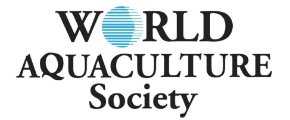TOTAL RESIDUAL OXIDANTS IN ATLANTIC SALMON POST-SMOLT IN BRACKISH WATER
Ozone is a strong oxidant which helps in recirculating aquaculture systems (RAS) to improve water quality (reduces organic matter, chemical oxygen demand, dissolved organic carbon, nitrite, water color) and fish health (pathogen inactivation). However, ozone usage is mostly restricted to freshwater systems. In brackish and seawater harmful so called "total residual oxidants (TROs)" are formed. The oxygen reduction potential (ORP) and the colorimetric N,N-diethyl-p-phenylenediamine (DPD) method can be used as proxy-measurements of water ozonation. ORP values are only a rough estimate for the real TRO concentrations. One cannot calculate one value by measuring the other. For precise and accurate measurements both methods are still challenging to use in aquaculture. One reason is the influence on the measured values by different water variables (e.g. different salinities). The available commercial TRO test-kits are not designed for aquaculture applications and can only be used on the low end of the measurement specifications with generally very low precision. For rainbow trout in freshwater a 50% lethal TRO concentration of ~60 μg/L as Cl2 was measured. Less severe effects were shown in chronically exposure studies of marine organisms to TROs. Here concentrations >60 μg/L as Cl2 (Turbot), 30-50 μg/L as Cl2 (European seabass), 16 - 23 μg/L as Cl2 (Atlantic Halibut) and 14 - 20 μg/L as Cl2 (European lobster) affect growth performance, gill physiology and increase mortality. For now, this information is not available for Atlantic salmon post-smolts.
The effect of TRO on Atlantic salmon post-smolts will be presented for a 11-day experimental period. Fifteen tanks were stocked with 65 fish each. After a three-week adoption period five ORP (TRO) values in triplicate were adjusted in the test tanks. Ozone was dosed into the water of a header tang (end ORP set point ~500 mV). The ozonated flow through water was mixed with non-ozonated water to achieve the treatment values before it reached the fish. The used values were 230 (0), 280 (~10), 350 (~10), 425 (20) and 488 (40) mV (μg/L as Cl2). Water quality variables were: dissolved oxygen >85% saturation, temperature ~7˚C, salinity ~12 ppt, pH 7 - 7.4 and photoperiod 24L:00D. Fish were fed ad libitum (120% overfed). The focus of this presentation will be to show ozone associated gill damage through histology.
The fish were very susceptible to ozone induced gill damage. Already at 280 mV there was increased but not severe hyperplasia and lamellar clubbing. The ORP values for the two highest treatments were already over the threshold values given in the literature. However, the measured TRO values indicated that these levels could be accepted. Both highest treatments showed severe gill damage. The highest treatment had 70-80% to the gills already damaged. Severe hyperplasia, hypertrophy and lamellar clubbing with early to advanced stage of lamellar fusion was found. Necrosis was quite severe in more than half of the samples.













